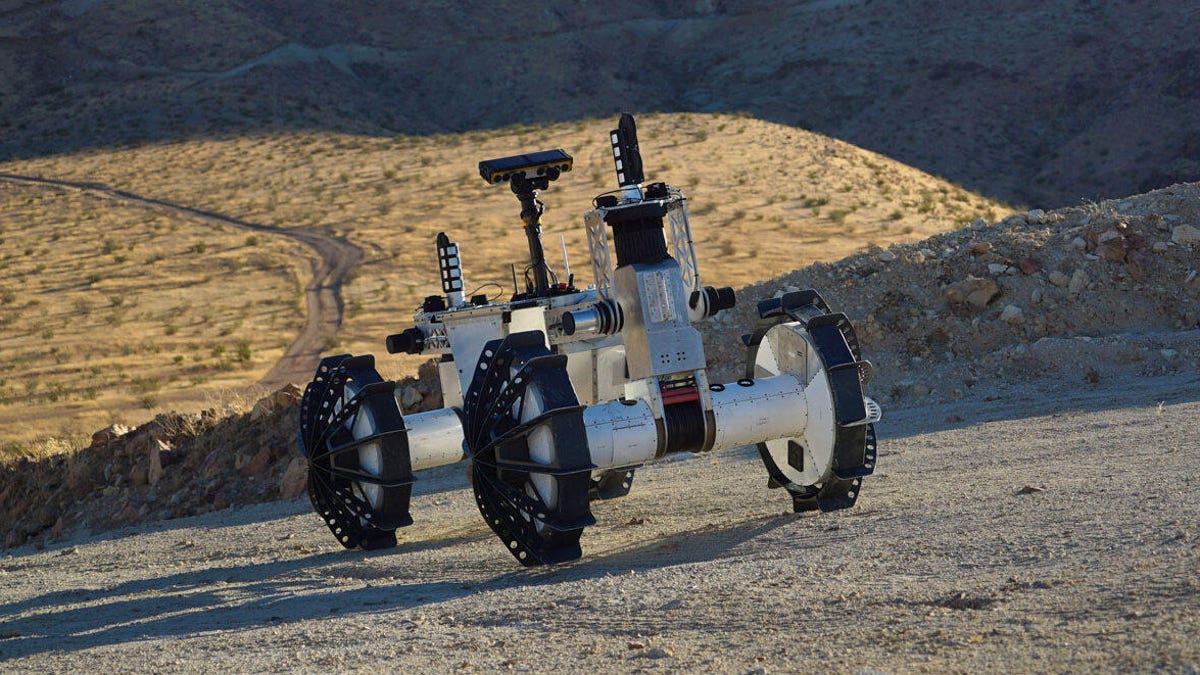NASA prototype rover can split in two, could climb down deep Mars craters
The transforming DuAxel machine could go where regular rovers fear to tread.
NASA's car-size Mars rovers are awesome, versatile machines capable of traversing rugged terrain. But they're not made to descend down the sides of craters. For that, NASA would need something like its DuAxel prototype rover, a wild concept that is two rovers in one.
When all together, DuAxel is a four-wheeled rover. The rear can anchor itself to the ground while the front goes free on two wheels. A tether holds the pieces together while the front section rappels down a steep slope. This could work well for exploring currently inaccessible crater walls on Mars.
NASA put a DuAxel prototype through its paces in the Mojave Desert in California. "DuAxel performed extremely well in the field, successfully demonstrating its ability to approach a challenging terrain, anchor, and then undock its tethered Axel rover," robotics technologist Issa Nesnas said in a statement from NASA's Jet Propulsion Laboratory on Tuesday.
A video shows the clever rover in action and how it can use onboard instruments to get a close look at what's under its wheels.
One of the motivations for developing DuAxel is to one day get a closer look at enigmatic dark streaks called recurring slope lineae that appear on the side of some martian craters. Scientists are trying to figure out if these have a watery origin.
The craters are too steep for a rover like Curiosity or Perseverance (which is currently on its way to Mars), but a transforming rappelling machine like DuAxel could handle the challenge.
It's not just Mars science that could benefit from the plucky little rover design. "DuAxel opens up access to more extreme terrain on planetary bodies such as the Moon, Mars, Mercury, and possibly some icy worlds, like Jupiter's moon Europa," said Nesnas.


